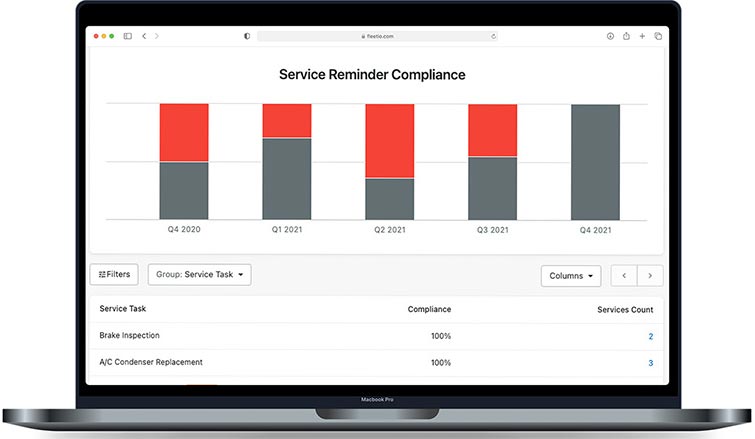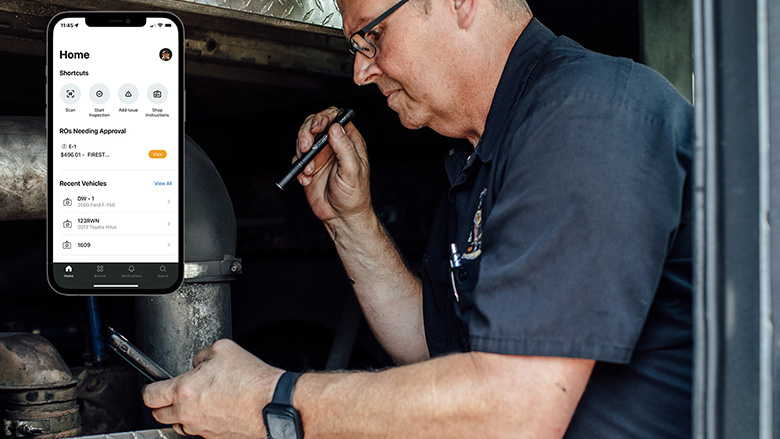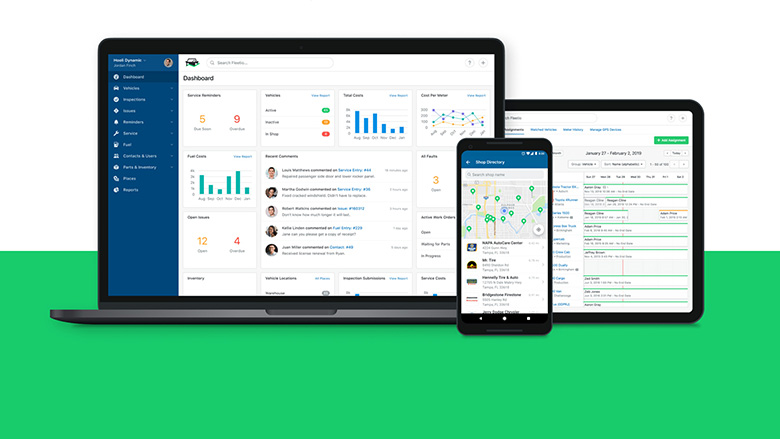Restoration fleets can leverage fleet software to manage asset maintenance and create efficient repair workflows to curb downtime.
Centralizing Fleet Data
Commercial cleaning and restoration fleets are heavily relied upon to provide fast, thorough services, from disaster relief to sanitation, for clients in both commercial and residential spaces. Such critical services means fleet downtime can be detrimental to customers as well as the business, making it imperative to effectively manage fleet maintenance to ensure all vehicles are in good condition before your drivers leave for a job.
With cloud-based fleet management software, you can digitize fleet data in a central location. Centralizing your fleet data provides the benefit of maximizing real-time data visibility, allowing you to monitor asset health and expenses, automate workflows and minimize downtime. Below, we’ll look at several ways in which fleet software works to make maintenance management quicker, easier and more precise.

Streamlining Maintenance Workflows
Two of your greatest sources of maintenance data include inspections and work orders, both of which can be time consuming to fill out and — especially with paper forms — can often be filled out incorrectly or incompletely. Fleet management software is designed to reduce instances of pencil-whipping and promote clean data entry to help ensure data reliability.
While paper inspections have long been used in the fleet space, this method of documentation often prohibits fleet managers from being alerted to issues for days or weeks at a time, resulting in compounding problems and unexpected breakdowns. With fleet management software, drivers can use a mobile app to complete digital vehicle inspections and upload the results instantly, allowing you to monitor asset health and stay apprised of issues — no matter where your vehicles are. Digital inspections are customizable to ensure your drivers are inspecting any items you deem necessary, including specialty items and PPE. Additionally, fleet managers are notified in real time of any inspection item failures, and failed items automatically trigger the maintenance workflow.
In addition to speeding up the service process, maintenance workflow automation saves fleet managers a lot of time around scheduling maintenance while offering the added benefit of tracking progress, repairs and expenses on a granular level to avoid surprise line items or miscommunication. Cloud-based fleet management software allows you to plan, schedule and monitor maintenance tasks from anywhere. Whether you manage maintenance in-house or outsource to a third party, you can clearly communicate service needs with technicians so they can start servicing your vehicles quickly.

Sticking to Scheduled PM
A key way to stay on top of fleet maintenance is through preventative maintenance (PM) scheduling. When a client has water or fire damage, it’s crucial to get to them as soon as possible to start recovery efforts. Because you and your customers can’t afford unexpected breakdowns, all of your commercial cleaning and restoration vehicles should follow a PM schedule based on manufacturer recommendations or a customized schedule based on asset mileage or age. Adhering to a PM schedule ensures your vehicles are routinely serviced and remain in good condition to avoid downtime and extend lifespan.
Fleet management software automates service reminders to improve your PM program. Service reminders are automatically sent based on odometer or usage updates from inspection results, preset OEM recommendations or telematics devices. These reminders provide you with ample time to schedule service around your fleet’s needs.

Making Data-driven Decisions
Maximizing visibility into your restoration fleet by managing all data in a single, cloud-based software provides deeper insights into vehicle performance. Fleet management software automatically stores a comprehensive service history for all of your vehicles. You can view histories by vehicle or across vehicle types, groups and locations to spot maintenance trends, uncover underlying patterns and make informed decisions about asset acquisition and disposal. Fleet management software also integrates with telematics providers so you can track and manage diagnostic trouble codes (DTCs) and engine fault alerts, which can then be linked to work orders to clarify maintenance needs.
With your restoration or commercial cleaning vehicles being in almost constant use, it’s easy to see how maintenance is the largest ongoing fleet expense. Tracking maintenance expenses with software allows you to create and share configurable reports to analyze fleet performance and expenses. You can view high-level metrics at a glance or take a deep dive into maintenance line items to identify overspending and determine better strategies for the future. Leveraging this insight empowers you to make confident, data-driven decisions and improve your fleet’s ROI.


